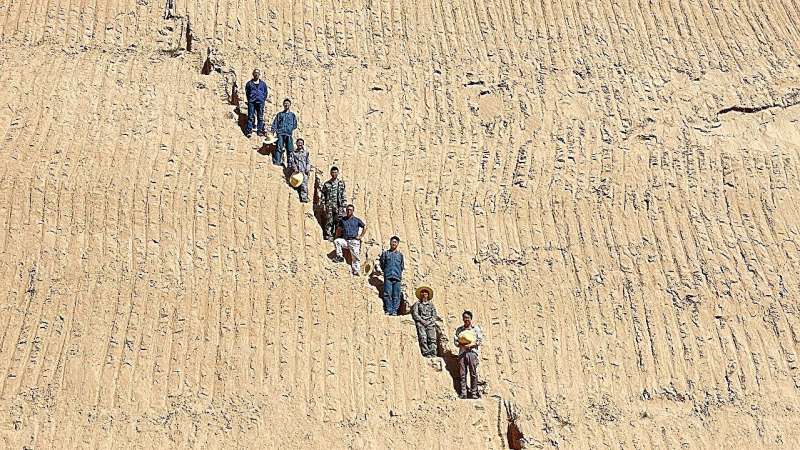This article has been reviewed according to Science X's editorial process and policies. Editors have highlighted the following attributes while ensuring the content's credibility:
fact-checked
peer-reviewed publication
trusted source
proofread
Orbitally induced strong monsoons facilitated early human dispersal to East Asia, finds study

In a study published in Proceedings of the National Academy of Sciences, researchers have shown that orbitally induced strengthening of the Asian summer monsoon played a key role in the dispersal of Homo sapiens from Africa to East Asia during the last interglacial period 125,000 to 70,000 years ago.
Led by Prof. Ao Hong from the Institute of Earth Environment of the Chinese Academy of Sciences (CAS), the researchers integrated a comprehensive compilation of paleoanthropological site data with new high-resolution reconstructions of the Asian summer monsoon based on Chinese loess data, continuous modeling of the East Asian hydroclimate, and a novel human habitat simulation—all covering the past 280,000 years.
How human ancestors responded to past climate change remains a key question in research on human evolution. Climate variability was a key driver of human evolution and dispersal within Africa during the Pleistocene. However, our understanding of the orbital hydroclimatic influence on the early dispersal of our species, Homo sapiens, from Africa to East Asia, is hampered by the lack of integrated paleoclimatic and paleoanthropological studies from Asia.
To reconstruct orbitally resolved Asian summer monsoon variability over the past 280,000 years, the researchers collected 2,066 samples in the field from the rapidly accumulating Huanxian loess–paleosol section on the central Chinese Loess Plateau for measurements in the laboratory.

The resulting unprecedented centennial-resolution reconstructions suggest that the orbital-scale variability of the Asian summer monsoon responds to the combined action of changes in insolation (a so-called external forcing; i.e., one coming from outside Earth), and ice volume and greenhouse gas concentration (examples of what we call internal forcings; i.e., those coming from the Earth system), rather than to their individual actions. This argument is strongly supported by the team's model-based reconstructions of the East Asian hydroclimate over the past 280,000 years.
"When we integrated proxy- and model-based spatiotemporal paleoclimatic reconstructions with paleoanthropological data compilations from Asia across time and space, we found, to our surprise, that H. sapiens dispersed to East Asia at the same time as the Asian summer monsoon was intensified. This suggests an important influence of the paleo-monsoon on the early dispersal of H. sapiens from Africa to East Asia," said Prof. Ao.
"In contrast to the strengthening of the Asian summer monsoon, the climate in much of southeast Africa worsened during the last interglacial. It is possible that these Asian and Southeast African hydroclimate changes acting together spurred the early dispersal of H. sapiens from Africa to East Asia," said Dr. Thibaut Caley, an author of the study and paleoclimatologist from Université de Bordeaux, France. In contrast, the lush vegetation in East Asia at the time would have attracted H. sapiens habitation.
To provide further quantitative evidence of climate effects on H. sapiens dispersal, Dr. Ruan Jiaoyang, corresponding author of the study and assistant researcher at the IBS Center for Climate Physics, South Korea, performed computer simulations of H. sapiens habitats and found that the H. sapiens occupation of East Asia was consistent with a transcontinental increase in simulated habitat suitability.
More information: Hong Ao et al, Concurrent Asian monsoon strengthening and early modern human dispersal to East Asia during the last interglacial, Proceedings of the National Academy of Sciences (2024). DOI: 10.1073/pnas.2308994121
Journal information: Proceedings of the National Academy of Sciences
Provided by Chinese Academy of Sciences




















